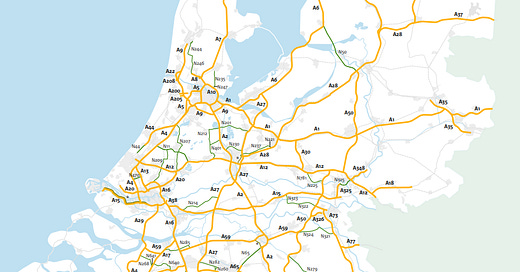Netherlands' 2026 Toll Shift: What It Means for Freight
The Netherlands is poised for a significant shift in its road freight taxation, scheduled for mid-2026. The impending "Vrachtwagenheffing" marks a decisive departure from the decades-old Eurovignette system, embracing a kilometer-based toll in line with the European Union's 2022 Eurovignette Directive. This strategic pivot, mirroring Denmark´s recent introduction of the “Vejafgifter” toll in early 2025, aims to foster greener logistics by penalizing higher CO2 emissions and ensuring a more equitable burden on infrastructure users. While certain operational specificities remain in flux, an informed assessment of its structure and anticipated impact on transport rates is now possible.
What is already known?
While the Dutch Ministry of Infrastructure and Water Management’s “Heavy Goods Vehicle Charge Programme” has announced mid-2026 as the implementation window, the exact starting date remains unknown. The official launch date will likely be announced in 2025, assuming the system begins operating in the first half of 2026.
The scope of affected vehicles and toll rate classification are well defined. The toll will apply to road freight vehicles with a maximum permitted mass of 3,5 tons, regardless of ownership nationality. Emission-free vehicles up to 4,25 tons will be exempt to account for additional battery weight. Toll rates will be determined based on three factors: permitted maximum mass, CO2 emissions and EURO emission class.
The toll's geographical coverage is also established. It will apply to nearly all motorways and selected provincial and municipal main roads. This network was strategically chosen to prevent vehicles from easily circumventing tolls by using alternative routes.
Source: www.vrachtwagenheffingsbeleid.nl
What is the cost structure?
Based on 2023 price levels, the new toll rates begin modestly at 2,2 cents per kilometer for a vehicle up to 12 tons with a CO2 class 5,escalating to a maximum of 42,5 cents per kilometer for vehicles exceeding 32 tons and classified as EURO class 0. A standard 40 ton EURO6 truck, a workhorse of modern logistics, will incur a charge of 17,5 cents per kilometer. Critically, these rates are subject to annual adjustments based on the inflation, with a preliminary 10,6% additional increase anticipated for 2026 based on European Economic Forecast Spring 2025 - a cumulative adjustment from the 2023 base rates to the projected go-live.
Crucially, the introduction of the "Vrachtwagenheffing" will simultaneously abolish the current Eurovignette system for the Netherlands, which in 2025 commanded an annual fee of €1,274 for multi-axle, CO2 class 1, EURO 6 vehicles. The motor vehicle tax for domestically registered vehicles will be reduced to the minimum amount allowed by the rules of the European Union. For a typical 40-tonne truck, this tax stood at €1,040 per annum in 2025, a figure that has historically seen annual adjustments. These concurrent changes introduce offsetting effects that complicate a simple additive calculation of cost increases.





